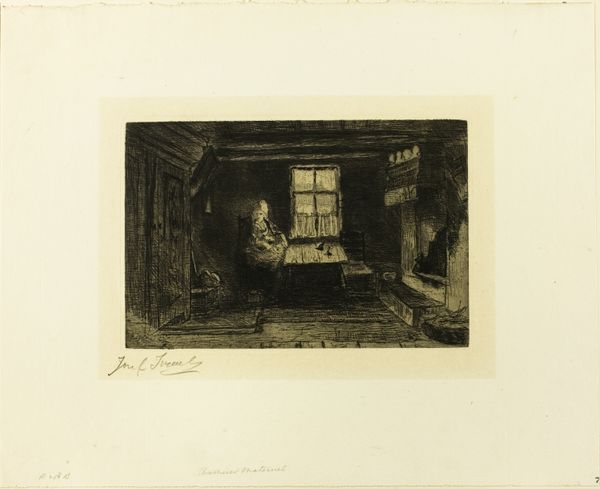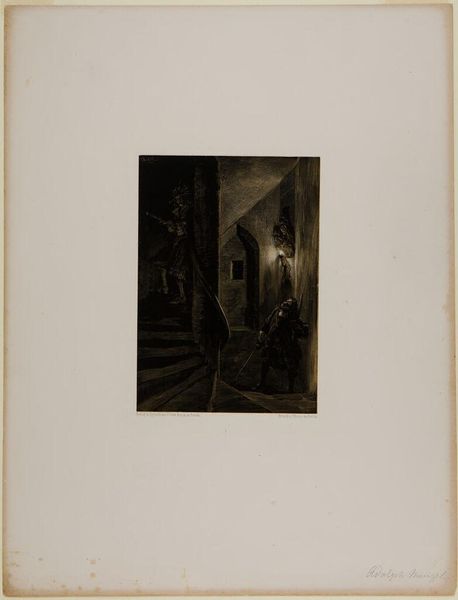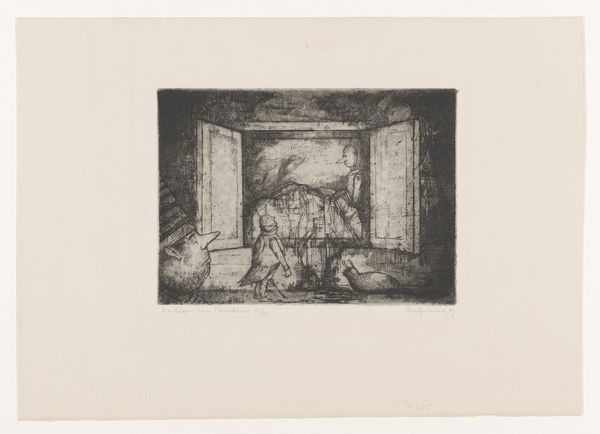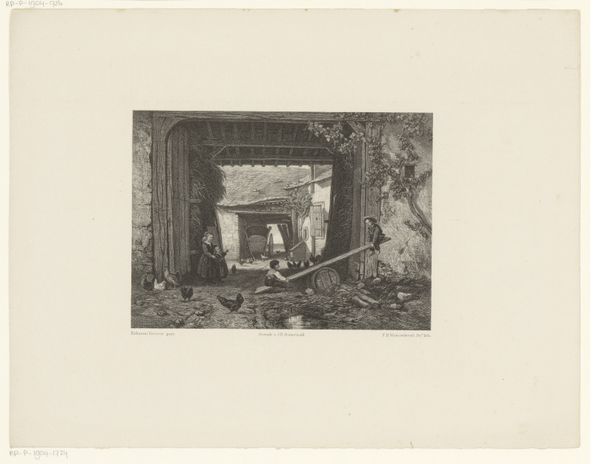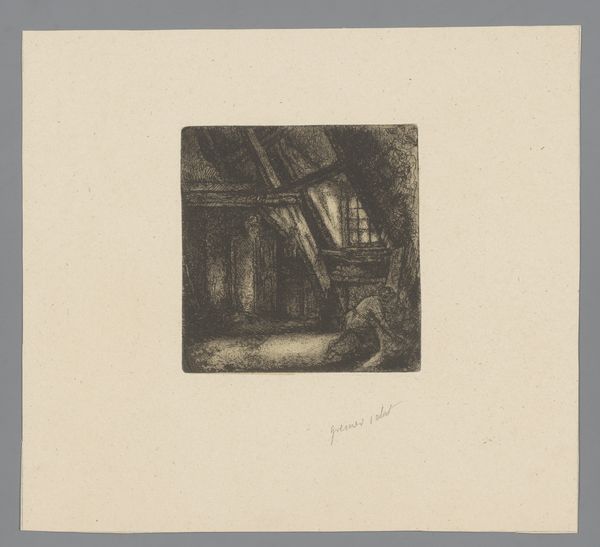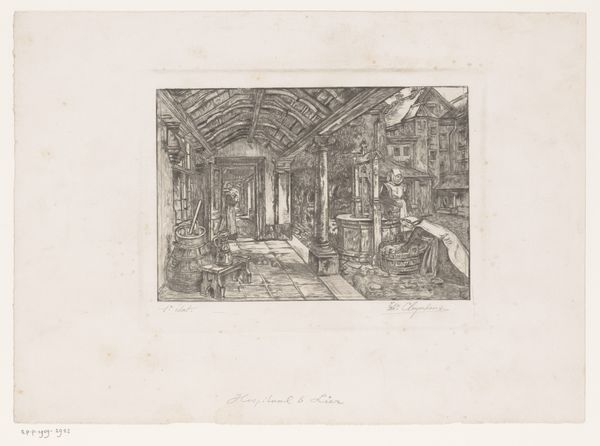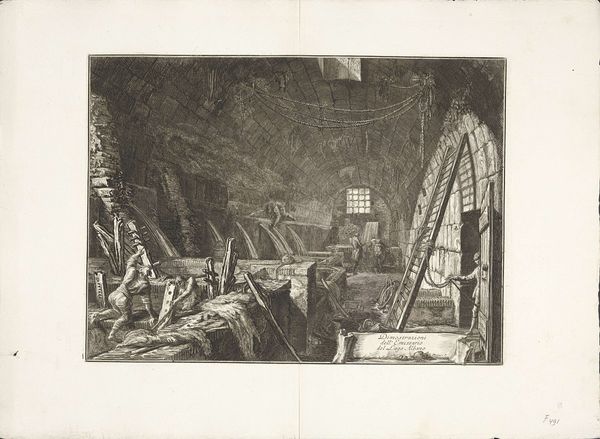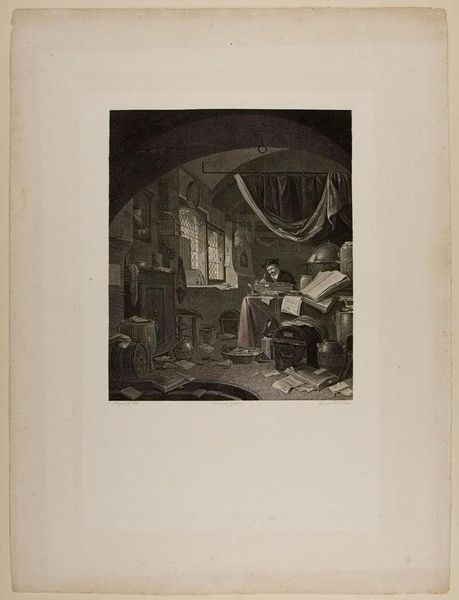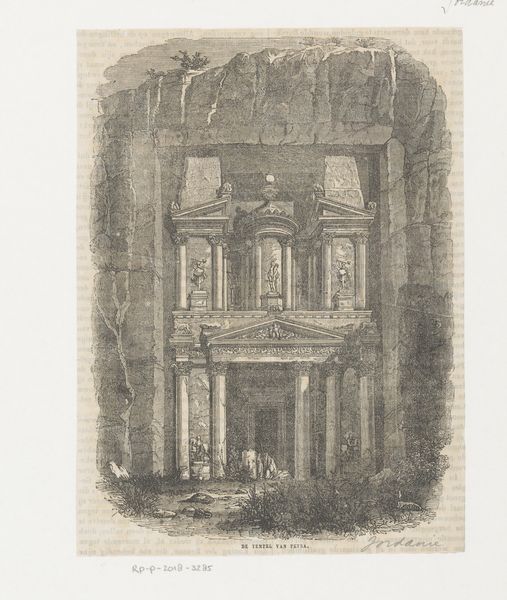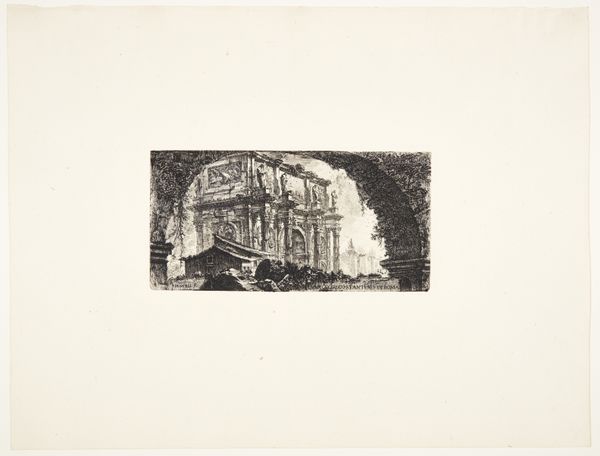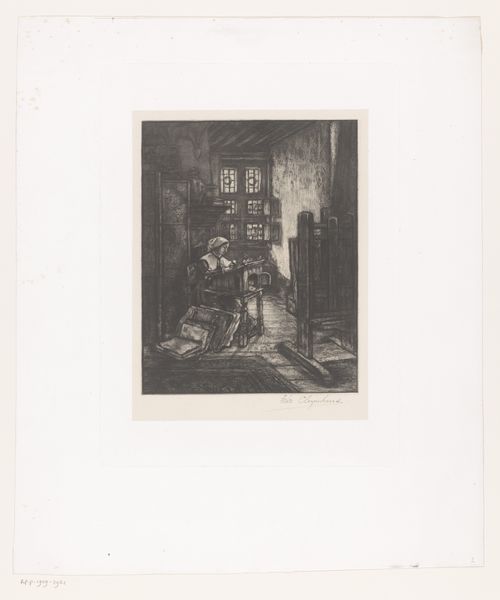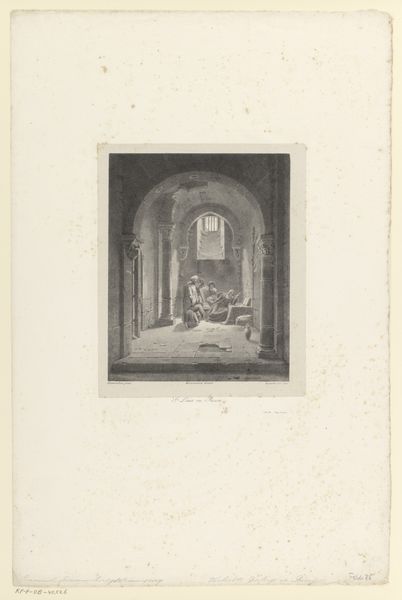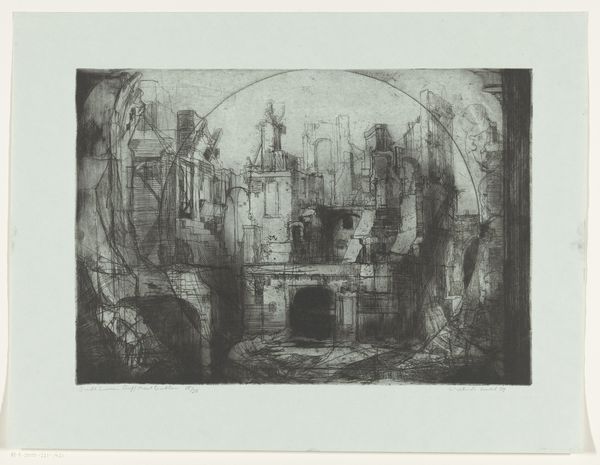
print, etching, engraving
#
neoclacissism
# print
#
etching
#
landscape
#
figuration
#
history-painting
#
engraving
Dimensions: height 433 mm, width 575 mm
Copyright: Rijks Museum: Open Domain
Editor: This etching, "Two Women in a Dilapidated Temple," from 1805 by Francesco Piranesi, has a really interesting feel. There's this decaying grandeur juxtaposed with these two women. What do you see in this piece? Curator: What immediately strikes me is how Piranesi is engaging with the visual language of Neoclassicism, but twisting it. Neoclassicism, remember, was all about order, rationality, and the glory of ancient Rome. But here, we see decay and ruin. The temple is falling apart, nature seems to be reclaiming it. Consider how the engraving uses light and shadow to emphasize the sense of a world lost and faded. Why present a ruined space? Editor: So, it's like a commentary on the impermanence of even the grandest civilizations? Curator: Precisely! Piranesi was operating within a very specific cultural and political context. The Napoleonic era was a time of upheaval, revolution, and the questioning of established powers. By depicting Rome in ruins, is Piranesi perhaps subtly critiquing the ambitions and fragility of empires, even as Neoclassicism celebrated their aesthetic? The temple ceases to be a place of veneration, or ritual, now two women sit in its remnants. How might that change how we see it? Editor: It almost feels like a memento mori for an entire empire. And, framing these two women, are they observers, or somehow symbolic of that decline themselves? Curator: That's an important question! Think about the role of women in representing broader societal values. Are they witnesses to history, emblems of its fall, or perhaps something else entirely? It is difficult to ignore how power can determine representation. Editor: It's fascinating how much historical and social context can be packed into a single image. I see so much more than I did at first glance. Curator: Exactly! By understanding the forces that shaped the artist and their world, we can unlock deeper layers of meaning and relevance in the art itself. It speaks volumes about how societal upheaval and political change could be expressed.
Comments
No comments
Be the first to comment and join the conversation on the ultimate creative platform.
